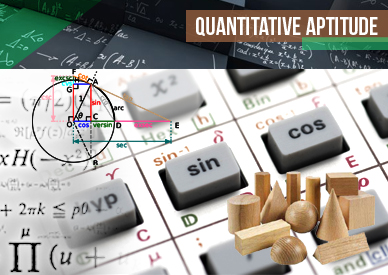Algebra For SBI PO : Set – 32

Algebra For SBI PO : Set – 33
D.1-5): In each of these questions, two equations (I) and (II) are given. You have to solve both the equations and give answer
(a) if x > y
(b) if x ≥ y
(c) if x < y
(d) if x ≤ y
(e) if x = y or no relation can be established between x and y.
1) I. 63x-94√x+35
II. 32y-52√y+21=0
(a) if x > y
(b) if x ≥ y
(c) if x < y
(d) if x ≤ y
(e) if x = y or no relation can be established between x and y.
2. I. x2-7√3x- 35 √15=5√5 x
II. y2-5√5 y+30=0
(a) if x > y
(b) if x ≥ y
(c) if x < y
(d) if x ≤ y
(e) if x = y or no relation can be established between x and y.
3) I. 14x2+ 11x – 15 = 0
II. 20y2– 31y + 12 = 0
(a) if x > y
(b) if x ≥ y
(c) if x < y
(d) if x ≤ y
(e) if x = y or no relation can be established between x and y.
4. I. √25 x+ √16 y=41
II. √16 x- √25 y=40
(a) if x > y
(b) if x ≥ y
(c) if x < y
(d) if x ≤ y
(e) if x = y or no relation can be established between x and y.
5. I. √x- (18)(15/2)/x2 =
II. √y=(19)(9/2)/y=0
(a) if x > y
(b) if x ≥ y
(c) if x < y
(d) if x ≤ y
(e) if x = y or no relation can be established between x and y.
D.6-10): In each of these questions, two equations (I) and (II) are given. Solve both the equations and give answer
(a) if x > y
(b) if x < y
(c) if x ≥ y
(d) if x ≤ y
(e) if x = y or no relation can be established between ‘x’ and ‘y’.
6) I. 63x – 194√x+143=0
II. 99 y-255 √y+150=0
(a) if x > y
(b) if x < y
(c) if x ≥ y
(d) if x ≤ y
(e) if x = y or no relation can be established between ‘x’ and ‘y’.
7) I. 16x2 – 40x – 39 = 0
II. 12y2 – 113y + 255 = 0
(a) if x > y
(b) if x < y
(c) if x ≥ y
(d) if x ≤ y
(e) if x = y or no relation can be established between ‘x’ and ‘y’.
8) I. x-7√3 x +36=0
II. y-12√2y+70=0
(a) if x > y
(b) if x < y
(c) if x ≥ y
(d) if x ≤ y
(e) if x = y or no relation can be established between ‘x’ and ‘y’.
9) I. x2-7√7x+84=0
II. y2-5√5y+30=0
(a) if x > y
(b) if x < y
(c) if x ≥ y
(d) if x ≤ y
(e) if x = y or no relation can be established between ‘x’ and ‘y’.
10) I. 10x – 6y = 13
II. 45x + 24y = 56
(a) if x > y
(b) if x < y
(c) if x ≥ y
(d) if x ≤ y
(e) if x = y or no relation can be established between ‘x’ and ‘y’.

